Stridsvagn m/21 Tank
Sweden purchased their first tanks from Germany in 1921. These were ten LK II light tanks, built and designed by the German DAC engineer Joseph Vollmer. It was Vollmer who had designed the German WW1 heavy tank the Sturmpanzerwagen A7V, He built this new tank built around a Daimler car chassis. The engine was mounted at the front of the tank with the driving and fighting compartment constructed behind it.
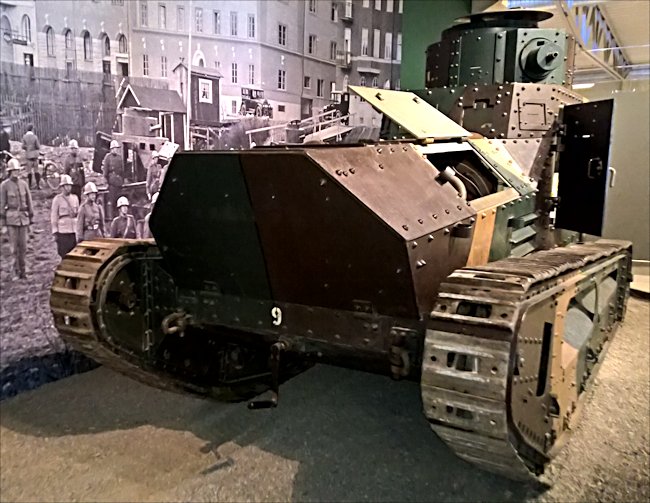
The only surviving 1918 original Swedish m/21 LKII tank can be found at the Arsenalen Tank Museum near Stockholm
The Leichter Kampfwagen (light combat car) LKII was designed as a cavalry tank with a maximum road speed of around 10 mph (16 km/h) which was double that of the German Sturmpanzerwagen A7V heavy tank. Due to the end of the war the LK Il were never deployed in combat. It was armed with an 8mm m/14 machine gun and powered by a Benz 1910 in-line 4-cylinder water cooled 55hp engine with a manual 4 speed gearbox. The protective armour ranged from 14mm to 4mm in thickness. It had a crew of four.
Under the articles of the Versailles Peace Treaty Germany was forbidden to own any tanks. In the autumn of 1921 they were shipped to Sweden in secrecy described as agricultural tractor parts and sheet metal boiler plates.
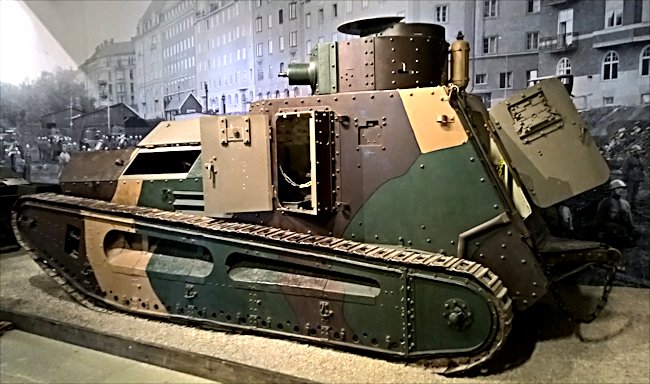
Side view of a preserved Swedish m/21 tank
The tanks were re-assembled at the Naval shipyards in Stockholm. A Royal letter dated in August 1922 records the granting of funding for the establishment of the Svea Livgarde (Swedish Life Guards) Panzervagnarna armoured vehicle unit in Stockholm.
At first the newly arrived LK-II German tanks were given the name Pansarvagn försöksmodell/1922. It was then changed to Swedish Army designation fm/22. The letter 'f' signified that the vehicle was under test and the number 22 represented the year of the tests 1922. This was later changed to Stridsvagn m/21 (Strv m/21). The letter 'm' indicated that the vehicle was now operational and the number 21, 1921 the year it was reconstructed in Sweden.
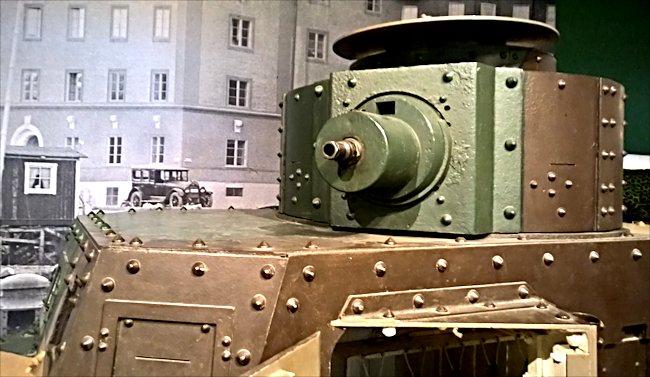
Turret and Swedish m/21 tank
In August 1922 the Swedish armoured unit of the Lifeguards started military trials with their new tanks. They even had the use of one French Renault FT 17 tank, but it was in such a bad condition that it was eventually used as an artillery target. The Strv m/21 tanks were at first painted army grey on the inside and out. Camouflage paint schemes were added later. White wash was painted over the main body during the snowy conditions of winter. The engine was started using a hand crank but if near the enemy the engine could be started from within the safety of the armoured fighting compartment.
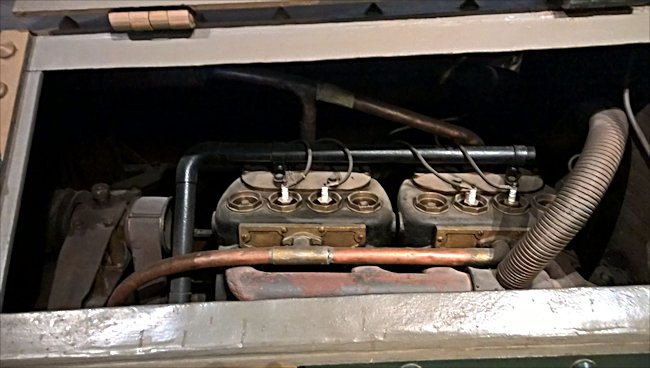
The original German Benz engine in a Swedish m/21 tank
When the tanks were first reassembled in 1922 there were placed in storage after a few basic mechanical tests. It was not until August 1923 that they saw their first major test under battlefield conditions. Five Strv m/21 tanks were transported across country to Skåne where they took part in a large military exercise in support of an infantry attack. They performed well.
The m/21 tanks were used in Military exercise regularly between 1923 and 1927. Through constant use some of the tanks suffered mechanical breakdowns. The big problem for the Swedish Army is that there were no German factories producing spare parts. This was illegal under the peace treaty. The Swedish Army mechanics started to strip parts from five of the tanks so that they could have five tanks available for action. This situation continued until 1927 when a company was eventually found that could produce the necessary spare parts. Part of the solution was to change the engine and transmission fitted in the tank from a German one to a Swedish engine.
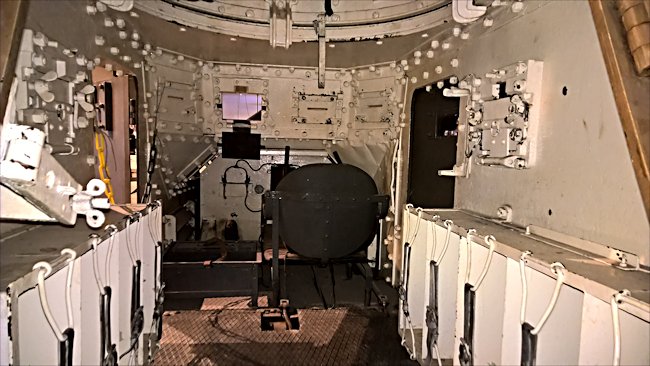
The interior of a Swedish m/21 tank
Five of the ten tanks received an upgrade. They were equipped with a new Swedish Scannia-Vabis 1544 85hp engine, gearbox and headlights. These five vehicles were designated m/21-29. They were not all upgraded at the same time. To were completed in 1930 and the other three received their upgrade between 1931 and 1934.
There are three of these upgraded vehicles remaining. It is believed that one was shipped to the Germany in 1938 to be used in an exhibition. This has not been confirmed by original documentary evidence yet. The fate of this tank is not known. One of the Stridsvagn m/21-29 tanks was used as a gate guard at the Swedish Tank Regiment P 18 barracks until 1993 when it was decided to send it to the German Tank Museum in Munster as they did not have a copy of this tank in their collection. It is still on public display. The Arsenalen Tank Museum in Sweden owns two Strv m/21-29 tanks and is in the process of restoring one of them to a working condition and the second to an external cosmetically restored condition as the inside of that tank is empty. They also have the the original LK-II Strv m/21 as shown in these photographs.
The Strv m/21 and Strv m/21-29 were withdrawn from Swedish Army service in 1938 when they were replaced by the Czech CKD AH-IV tankette which was given the name Swedish Strv m/37.
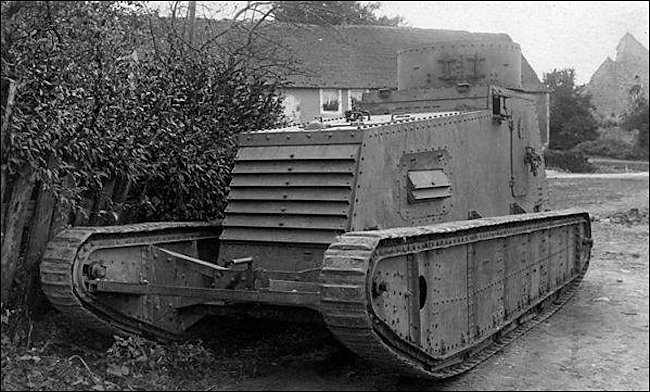
German LK 1 light tank prototype from 1918 armed with a 7.92mm machine gun. maximum road speed 11 mph
Tank books

